- Home
- Michael Pollan
How to Change Your Mind Page 5
How to Change Your Mind Read online
Page 5
From here on, Jesse watched (or whatever you call it) the birth of . . . everything, in the unfolding of an epic sequence beginning with the appearance of cosmic dust leading to the creation of the stars and then the solar systems, followed by the emergence of life and from there the arrival of “what we call humans,” then the acquisition of language and the unfolding of awareness, “all the way up to one’s self, here in this room, surrounded by my friends. I had come all the way back to right where I was. How much clock time had elapsed? I had no idea.
“What stands out most for me is the quality of the awareness I experienced, something entirely distinct from what I’ve come to regard as Bob. How does this expanded awareness fit into the scope of things? To the extent I regard the experience as veridical—and about that I’m still not sure—it tells me that consciousness is primary to the physical universe. In fact, it precedes it.” Did he now believe consciousness exists outside the brain? He’s not certain. “But to go from being very sure that the opposite is true”—that consciousness is the product of our gray matter—“to be unsure is an immense shift.” I asked him if he agreed with something I’d read the Dalai Lama had said, that the idea that brains create consciousness—an idea accepted without question by most scientists—“is a metaphysical assumption, not a scientific fact.”
“Bingo,” Jesse said. “And for someone with my orientation”—agnostic, enamored of science—“that changes everything.”
* * *
• • •
HERE’S WHAT I DON’T GET about an experience like Bob Jesse’s: Why in the world would you ever credit it at all? I didn’t understand why you wouldn’t simply file it under “interesting dream” or “drug-induced fantasy.” But along with the feeling of ineffability, the conviction that some profound objective truth has been disclosed to you is a hallmark of the mystical experience, regardless of whether it has been occasioned by a drug, meditation, fasting, flagellation, or sensory deprivation. William James gave a name to this conviction: the noetic quality. People feel they have been let in on a deep secret of the universe, and they cannot be shaken from that conviction. As James wrote, “Dreams cannot stand this test.” No doubt this is why some of the people who have such an experience go on to found religions, changing the course of history or, in a great many more cases, the course of their own lives. “No doubt” is the key.
I can think of a couple of ways to account for such a phenomenon, neither entirely satisfying. The most straightforward and yet hardest to accept explanation is that it’s simply true: the altered state of consciousness has opened the person up to a truth that the rest of us, imprisoned in ordinary waking consciousness, simply cannot see. Science has trouble with this interpretation, however, because, whatever the perception is, it can’t be verified by its customary tools. It’s an anecdotal report, in effect, and so has no value. Science has little interest in, and tolerance for, the testimony of the individual; in this it is, curiously, much like an organized religion, which has a big problem crediting direct revelation too. But it’s worth pointing out that there are cases where science has no choice but to rely on individual testimony—as in the study of subjective consciousness, which is inaccessible to our scientific tools and so can only be described by the person experiencing it. Here phenomenology is the all-important data. However, this is not the case when ascertaining truths about the world outside our heads.
The problem with crediting mystical experiences is precisely that they often seem to erase the distinction between inside and outside, in the way that Bob Jesse’s “diffuse awareness” seemed to be his but also to exist outside him. This points to the second possible explanation for the noetic sense: when our sense of a subjective “I” disintegrates, as it often does in a high-dose psychedelic experience (as well as in meditation by experienced meditators), it becomes impossible to distinguish between what is subjectively and objectively true. What’s left to do the doubting if not your I?
* * *
• • •
IN THE YEARS following that first powerful psychedelic journey, Bob Jesse had a series of other experiences that shifted the course of his life. Living in San Francisco in the early 1990s, he got involved in the rave scene and discovered that the “collective effervescence” of the best all-night dance parties, with or without psychedelic “materials,” could also dissolve the “subject-object duality” and open up new spiritual vistas. He began to explore various spiritual traditions, from Buddhism to Quakerism to meditation, and found his priorities in life gradually shifting. “It began to occur to me that spending time in this area might actually be far more important and far more fulfilling than what I had been doing” as a computer engineer.
While on a sabbatical from Oracle (he would leave for good in 1995), Jesse set up a nonprofit called the Council on Spiritual Practices (CSP), with the aim of “making direct experience of the sacred more available to more people.” The website downplays the organization’s interest in promoting entheogens—Bob Jesse’s preferred term for psychedelics—but does describe its mission in suggestive terms: “to identify and develop approaches to primary religious experience that can be used safely and effectively.” The website (csp.org) offers an excellent bibliography of psychedelic research and regular updates on the work under way at Johns Hopkins. CSP would also play a role in supporting the UDV lawsuit that resulted in the 2006 Supreme Court decision.
The Council on Spiritual Practices grew out of Jesse’s systematic exploration of the psychedelic literature and the psychedelic community in the Bay Area soon after he moved to San Francisco. In his highly deliberate, slightly obsessive, and scrupulously polite way, Jesse contacted the region’s numerous “psychedelic elders”—the rich cast of characters who had been deeply involved in research and therapy in the years before most of the drugs were banned in 1970, with the passing of the Controlled Substances Act, and the classification of LSD and psilocybin as schedule 1 substances with a high potential for abuse and no recognized medical use. There was James Fadiman, the Stanford-trained psychologist who had done pioneering research on psychedelics and problem solving at the International Foundation for Advanced Study in Menlo Park, until the FDA halted the group’s work in 1966. (In the early 1960s, there was at least as much psychedelic research going on around Stanford as there was at Harvard; it just didn’t have a character of the wattage of a Timothy Leary out talking about it.) Then there was Fadiman’s colleague at the institute Myron Stolaroff, a prominent Silicon Valley electrical engineer who worked as a senior executive at Ampex, the magnetic recording equipment maker, until an LSD trip inspired him to give up engineering (much like Bob Jesse) for a career as a psychedelic researcher and therapist. Jesse also found his way into the inner circle of Sasha and Ann Shulgin, legendary Bay Area figures who held weekly dinners for a community of therapists, scientists, and others interested in psychedelics. (Sasha Shulgin, who died in 2014, was a brilliant chemist who held a DEA license allowing him to synthesize novel psychedelic compounds, which he did in prodigious numbers. He also was the first to synthesize MDMA since it had been patented by Merck in 1912 and forgotten. Recognizing its psychoactive properties, he introduced the so-called empathogen to the Bay Area’s psychotherapy community. Only later, did it become the club drug known as Ecstasy.) Jesse also befriended Huston Smith, the scholar of comparative religion, whose mind had been opened to the spiritual potential of psychedelics when, as an instructor/lecturer at MIT in 1962, he served as a volunteer in the Good Friday Experiment, from which he came away convinced that a mystical experience occasioned by a drug was no different from any other kind.
By way of these “elders” and his own reading, Jesse began unearthing the rich body of first-wave psychedelic research, much of which had been lost to science. He learned that there had been more than a thousand scientific papers on psychedelic drug therapy before 1965, involving more than forty thousand research subjects. Beginning in the 1950s and continuing int
o the early 1970s, psychedelic compounds had been used to treat a variety of conditions—including alcoholism, depression, obsessive-compulsive disorder, and anxiety at the end of life—frequently with impressive results. But few of the studies were well controlled by modern standards, and some of them were compromised by the enthusiasm of the researchers involved.
Of even keener interest to Bob Jesse was the early research exploring the potential of psychedelics to contribute to what, in a striking phrase, he calls “the betterment of well people.” There had been studies in “healthy normals” of artistic and scientific creativity and spirituality. The most famous of these was the Good Friday, or Marsh Chapel, Experiment, conducted in 1962 by Walter Pahnke, a psychiatrist and minister working on a PhD dissertation at Harvard under Timothy Leary. In this double-blind experiment, twenty divinity students received a capsule of white powder during a Good Friday service at Marsh Chapel on the Boston University campus, ten of them containing psilocybin, ten an “active placebo”—in this case niacin, which creates a tingling sensation. Eight of the ten students receiving psilocybin reported a powerful mystical experience, while only one in the control group did. (Telling them apart was not difficult, rendering the double blind a somewhat hollow conceit: those on the placebo sat sedately in their pews while the others lay down or wandered about the chapel, muttering things like “God is everywhere” and “Oh, the Glory!”) Pahnke concluded that the experiences of those who received the psilocybin were “indistinguishable from, if not identical with,” the classic mystical experiences reported in the literature. Huston Smith agreed. “Until the Good Friday Experiment,” he told an interviewer in 1996, “I had had no direct personal encounter with God.”
In 1986, Rick Doblin conducted a follow-up study of the Good Friday Experiment in which he tracked down and interviewed all but one of the divinity students who received psilocybin at Marsh Chapel. Most reported that the experience had reshaped their lives and work in profound and enduring ways. However, Doblin found serious flaws in Pahnke’s published account: Pahnke had failed to mention that several subjects had struggled with acute anxiety during their experience. One had to be restrained and given an injection of Thorazine, a powerful antipsychotic, after he fled from the chapel and headed down Commonwealth Avenue, convinced he had been chosen to announce the news of the coming of the Messiah.
In this and a second review of another Timothy Leary–supervised experiment, of recidivism at Concord State Prison, Doblin had raised troubling questions about the quality of the research done in the Harvard Psilocybin Project, suggesting that the enthusiasm of the experimenters had tainted the reported results. If this research were going to be revived and taken seriously, Jesse concluded, it would have to be done with considerably more rigor and objectivity. And yet the results of the Good Friday Experiment were highly suggestive and, as Bob Jesse and Roland Griffiths would soon decide, well worth trying to reproduce.
* * *
• • •
BOB JESSE SPENT the early 1990s excavating the knowledge about psychedelics that had been lost when formal research was halted and informal research went underground. In this, he was a little like those Renaissance scholars who rediscovered the lost world of classical thought in a handful of manuscripts squirreled away in monasteries. However, in this case, considerably less time had elapsed, so the knowledge remained in the brains of people still alive, like James Fadiman and Myron Stolaroff and Willis Harman (another Bay Area engineer turned psychedelic researcher), who merely had to be asked for it, and in scientific papers in libraries and databases, which merely had to be searched. But if there is a modern analogy to the medieval monastery where the world of classical thought was saved from oblivion, a place where the guttering flame of psychedelic knowledge was assiduously fanned during its own dark age, that place would have to be Esalen, the legendary retreat center in Big Sur, California.
Perched on a cliff overlooking the Pacific as if barely clinging to the continent, the Esalen Institute was founded in 1962 and ever since has been a center of gravity for the so-called human potential movement in America, serving as the unofficial capital of the New Age. A great many therapeutic and spiritual modalities were developed and taught here over the years, including the therapeutic and spiritual potential of psychedelics. Beginning in 1973, Stanislav Grof, the Czech émigré psychiatrist who is one of the pioneers of LSD-assisted psychotherapy, served as scholar in residence at Esalen, but he had conducted workshops there for years before. Grof, who has guided thousands of LSD sessions, once predicted that psychedelics “would be for psychiatry what the microscope is for biology or the telescope is for astronomy. These tools make it possible to study important processes that under normal circumstances are not available for direct observation.” Hundreds came to Esalen to peer through that microscope, often in workshops Grof led for psychotherapists who wanted to incorporate psychedelics in their practices. Many if not most of the therapists and guides now doing this work underground learned their craft at the feet of Stan Grof in the Big House at Esalen.
Whether such work continued at Esalen after LSD was made illegal is uncertain, but it wouldn’t be surprising: the place is perched so far out over the edge of the continent as to feel beyond the reach of federal law enforcement. But at least officially, such workshops ended when LSD became illegal. Grof began teaching instead something called holotropic breathwork, a technique for inducing a psychedelic state of consciousness without drugs, by means of deep, rapid, and rhythmic breathing, usually accompanied by loud drumming. Yet Esalen’s role in the history of psychedelics did not end with their prohibition. It became the place where people hoping to bring these molecules back into the culture, whether as an adjunct to therapy or a means of spiritual development, met to plot their campaigns.
In January 1994, Bob Jesse managed to get himself invited to one such meeting at Esalen. While helping out with the dishes after a Friday night dinner at the Shulgins’, Jesse learned that a group of therapists and scientists would be gathering in Big Sur to discuss the prospects for reviving psychedelic research. There were signs that the door Washington, D.C., had slammed shut on research in the late 1960s might be opening, if only a crack: Curtis Wright, a new administrator at the FDA (and, as it happens, a former student of Roland Griffiths’s at Hopkins), had signaled that research protocols for psychedelics would be treated like any other—judged on their merits. Testing this new receptivity, a psychiatrist at the University of New Mexico named Rick Strassman had sought and received approval to study the physiological effects of DMT, a powerful psychedelic compound found in many plants. This small trial marked the first federally sanctioned experiment with a psychedelic compound since the 1970s—in retrospect, a watershed event.
Around the same time, Rick Doblin and Charles Grob, a psychiatrist at UCLA, had succeeded in persuading the government to approve the first human trial of MDMA. (Grob is one of the first psychiatrists to advocate for the return of psychedelics to psychotherapy; he later conducted the first modern trial of psilocybin for cancer patients.) The year before the Esalen gathering (which Grob and Doblin both attended), David Nichols, a Purdue University chemist and pharmacologist, launched the Heffter Research Institute (named for the German chemist who first identified the mescaline compound in 1897) with the then improbable ambition of funding serious psychedelic science. (Heffter has since helped fund many of the modern trials of psilocybin.) So there were scattered hopeful signs in the early 1990s that conditions were ripening for a revival of psychedelic research. The tiny community that had sustained such a dream through the dark ages began, tentatively, quietly, to organize.
Even though Jesse was new to this community, and neither a scientist nor a therapist, he asked if he could attend the Esalen meeting and offered to make himself useful, refilling water glasses if that’s what it took. Most of the gathering was taken up with discussions of the potential medical applications of psychedelics, as well as the need for basi
c research on the neuroscience. Jesse was struck by the fact that so little attention was paid to the spiritual potential of these compounds. He left the meeting convinced that “okay, there is room to maneuver here. I was hoping one of these people would pick up the ball and run with it, but they were busy with the other ball. So I made a decision to seek a leave of absence from Oracle.” Within a year, Jesse would launch the Council on Spiritual Practices, and within two the council would convene its own meeting at Esalen, in January 1996, with the aim of opening a second front in the campaign to resurrect psychedelics.
Fittingly, the gathering took place in the Maslow Room at Esalen, named for the psychologist whose writings on the hierarchy of human needs underscored the importance of “peak experiences” in self-actualization. Most of the fifteen in attendance were “psychedelic elders,” therapists and researchers like James Fadiman and Willis Harman, Mark Kleiman, then a drug-policy expert at the Kennedy School (and Rick Doblin’s thesis tutor there), and religious figures like Huston Smith, Brother David Steindl-Rast, and Jeffrey Bronfman, the head of the UDV church in America (and heir to the Seagram’s liquor fortune). But Jesse wisely decided to invite an outsider as well: Charles “Bob” Schuster, who had served both Ronald Reagan and George H. W. Bush as director of the National Institute on Drug Abuse. Jesse didn’t know Schuster well at all; they had once spoken briefly at a conference. But Jesse came away from the encounter thinking Schuster just might be receptive to an invitation.
Exactly why Bob Schuster—a leading figure in the academic establishment undergirding the drug war—would be open to the idea of coming to Esalen to discuss the spiritual potential of psychedelics was a mystery, at least until I had the opportunity to speak to his widow, Chris-Ellyn Johanson. Johanson, who is also a drug researcher, painted a picture of a man of exceptionally broad interests and deep curiosity.

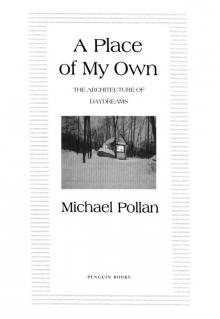 A Place of My Own: The Education of an Amateur Builder
A Place of My Own: The Education of an Amateur Builder Cooked: A Natural History of Transformation
Cooked: A Natural History of Transformation The Omnivore's Dilemma
The Omnivore's Dilemma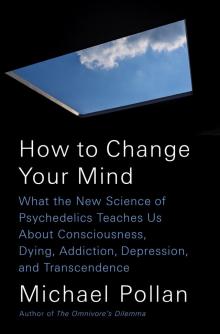 How to Change Your Mind
How to Change Your Mind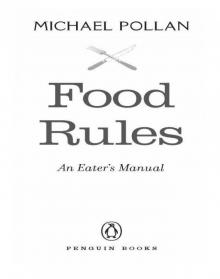 Food Rules
Food Rules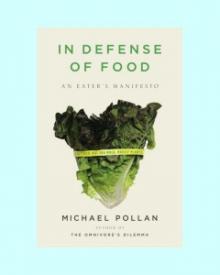 In Defense of Food
In Defense of Food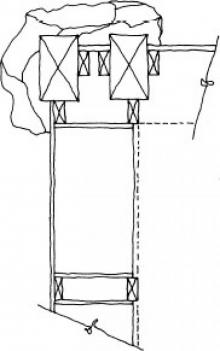 A Place of My Own
A Place of My Own